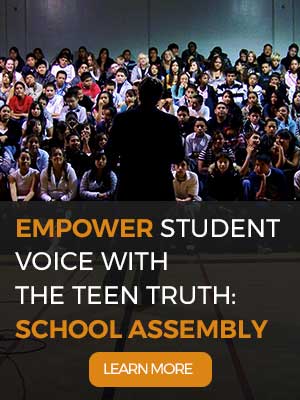Cyberbully Prevention
With the rise of social media over the last decade, cyberbullying has become a huge problem for students and for schools. To follow up with my October post about bullying prevention, I thought it would be timely to explore the cyberbullying phenomenon in this November post. As a result, I will discuss the characteristics and apps associated with cyberbullying and then give strategies that counselors, teachers, mental health professionals, and activity directors can use to combat cyberbullying in their schools!
Definitions and Background Information
The National Crime Prevention Council defines cyberbullying as bullying (harassing, threatening, embarrassing, or targeting another person) that takes place online and through text messages sent to cell phones.
By definition, cyberbullying involves minors. If an adult is harassing someone online or by text message, it may meet the definition of cyber-harassment or cyberstalking; this is a crime that involves legal consequences and/or incarceration.
Both boys and girls cyberbully, but they tend to do so in different ways; girls cyberbully by spreading rumors and excluding or making fun of others, while boys are more likely to send sexually explicit content or make physical threats online.
Examples of Cyberbullying
Below are some of the most common ways that students cyberbully other students.
- Creating a social media group or website that makes fun of another student
- Using social media to judge and rank groups of students
- Sending a nasty/threatening email, instant message, or text message
- Deceiving another student so they share embarrassing or personal information, the deceiver then sends that information to other students or makes it public in some way
- Hacking into a student’s online account (email or social media) in order to send negatives messages while posing as that student
The Effects of Cyberbullying
Victims of cyberbullying often experience feelings of depression, fear, anger, anxiety, and insecurity in much the same way that bullying victims do. However, because of the reasons below, cyberbully victims tend to experience these feelings on a deeper and more damaging level.
- Cyberbullying is so much more public since students can forward emails/text message or create sites that reach thousands of people.
- Since cyberbullying often occurs at home, the student is victimized in their “safe place”.
- Students say things online that they wouldn’t say in person so cyberbullying is often more severe than regular bullying.
Guidance or Character Education Lessons
At my middle school, we have an entire lesson we present to students in the spring over how to handle situations involving cyberbullying and sexting. You can access my cyberbully prevention lesson plan here. Also, here is a super helpful cyberbullying resource from Facebook that we use in our lesson. We use this cyberbullying lesson to educate students on how to keep themselves safe from cyberbullying threats. Then we teach them the definition of sexting, the fact that any nude or semi-nude image of a minor can be considered child pornography, and the serious legal consequences of sexting. Our school resource (police) officer co-teaches this lesson with us to explain the legal consequences of both cyberbullying and sexting. We remind students that if they ever receive a suggestive picture, they should immediately tell their parent/guardian and then delete the picture. As always, we email the lesson plan to teachers in advance, in case they want to participate in or expand on the lesson.
Parent Education Workshops
An important part of cyberbully prevention in any school is parent education! It is a great idea to plan a spring and fall semester parent workshop to educate the parents in your community on how to keep their children safe from cyberbullying. Here is an agenda for a cyberbullying parent meeting I had a few years ago, with links to the parent resources that we shared during the workshop.
DECEMBER PARENT MEETING WHO- Counselors, Parent/Community Liaison, Parents WHAT –Preventing Cyberbullying: How to Keep Your Kids Safe WHEN-5 to 6 pm WHERE- Martinez’ Parent Center WHY- To provide interventions to cyberbullying MATERIALS- Parenting in the Digital Age Parent Workshop Guide, Conflict Resolution Steps, food-tamales and drinks, translation machine, fliers/marquee/email & phone alerts to advertise parent workshop HOW- Agenda
|
Peer Mentoring
Another way that we promote cyberbullying prevention in my school is through the use of peer mentoring. All of our new students are paired with a trained peer mentor who goes over school processes/rules/consequences while giving them a tour on their first day. Part of this tour includes how to get help for cyberbullying threats. The peer mentor then follows up with their mentee weekly throughout the school year to check if they need any help with issues such as cyberbullying. Here is a link to my peer mentor program training materials, if you’d like to start it up at your school. Additionally, Rising Up is an amazing SEL program that is designed to help stop bullying, end teen suicide, and build resilient students through peer mentoring. Visit this link to start a Rising Up program at your school to combat cyberbullying.
The Main Apps Associated with Cyberbullying
Here are some of the main apps for parents to watch out for as they protect their kids against cyberbullying.
Vine
This app allows users to air and share short looping videos. Vine has been used in many of the violent “games” kids and teens are playing where they physically assault each other while videotaping it. Similar Apps: Viddy, Keek, Socialcam
Tinder
Tinder is a matchmaking service with a minimum age of 13. Teens use it as a dating or hookup app, pedophiles have been found on it, and students have been caught creating embarrassing profiles of others on this app. Tinder also uses a GPS tracker to find the location of the user through their cell phone. Similar Apps: Bumble, Happn, OKCupid
Kik
Kik is a texting program where students can send text and pictures without using their wireless provider’s SMS service. Thus, students may take more risks with Kik because they can send text messages and photos without parent knowledge. Similar Apps: Viber, WhatsApp, TextNow
Snapchat
Snapchat is an app with photo sharing capability where the photos automatically delete themselves in ten seconds. This creates a dangerous situation where kids feel they can send inappropriate or sexually explicit photos since they will only post for a short time. However, we all know that nothing on the internet is every really erased- Snapchat photos included. Similar Apps: Yovo, Slingshot, Boo!
Helpful Resources
These are some of my favorite cyberbully prevention resources! I utilize them in my guidance lessons and in my work with parents.
Teen Cyberbullying Investigated: Where Do Your Rights End and Consequences Begin?
That’s all for today, Folks! I’d love to hear your thoughts on helping students prevent sexting and/or cyberbullying, so please leave a comment below! Hope to see you back here next for my December post!

Stephanie Lerner
School Counselor, TEEN TRUTH





